Corsair Vengeance 8GB DDR3 1600 CL9 Memory Kit Review
Overclocking: AIDA64, Crysis 2, and Folding@Home
Once we were finished with the tests we wanted to see how well our Corsair Vengeance RAM would overclock for us in our Sandy Bridge test system. This memory is rated for 1600MHz speed with 9-9-9-24 timings and a 2T command rate at 1.5v.
We first turned to attempts to run at tighter timings at the default 1600MHz memory speed at a default voltage of 1.5v. However, no matter which latency setting we tried to decrease, this RAM would not post with latency lower than 9-9-9-24. We were, however, able to drop the command rate to 1T from the default of 2T.
We next attempted to increase the clock speed of the RAM by setting the next highest memory divider on our Asus P8P67 Pro motherboard which would have set a memory speed of 1866MHz. After a lot of trial & error testing we were able to get 1866MHz stable at 1.65v and 10-10-9-24 2T.

We ran our AIDA64, Crysis 2, and Folding@Home tests again with both of these new speeds to see if there is a demonstrable improvement from the tighter timings, and we did find some improvements.
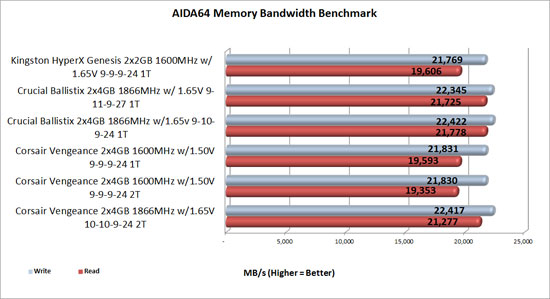
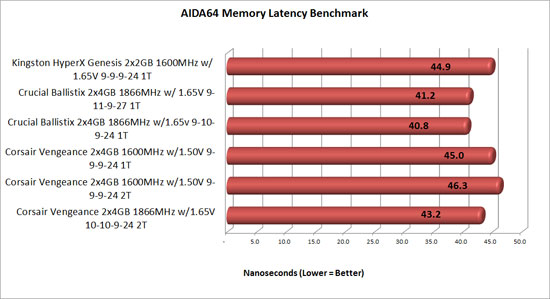
With the increase to 1866MHz, both bandwidth and latency improved significantly, nearly matching our 2000MHz Crucial Ballistix Kit.
At the 1600MHz/1T settings, read bandwidth increased a noticeable amount while write bandwidth remained unchanged compared to this kit’s stock settings. Latency predictably decreased with the lower command rate.
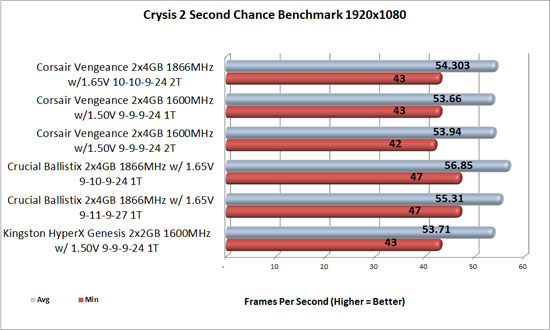
Since we noticed before that RAM speeds had little effect on Crysis 2 at 1280×1024, we only re-ran our 1920×1080 Crysis 2 test with our new tighter timings. The overclocked settings of the Corsair Vengeance kit did result in a slight 1 FPS increase in minimum framerate, and an insignificant change in average framerate. Essentially, Crysis 2 performance remained unchanged by the overclocked settings.
It is interesting to note that, even though the synthetic AIDA64 tests showed these sticks matching our 2000MHz Ballistix kit, in a real world test the latency we sacrificed to reach the 1866MHz speed results in the Vengeance kit falling 2 FPS behind the Ballistix.
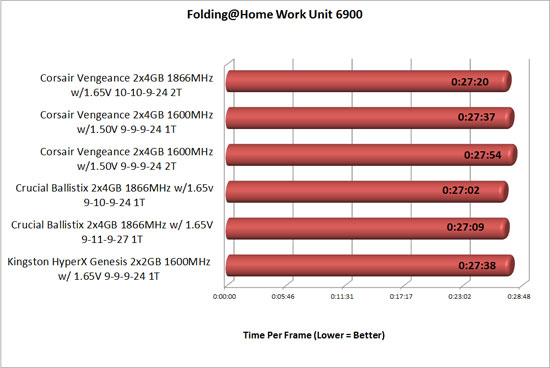
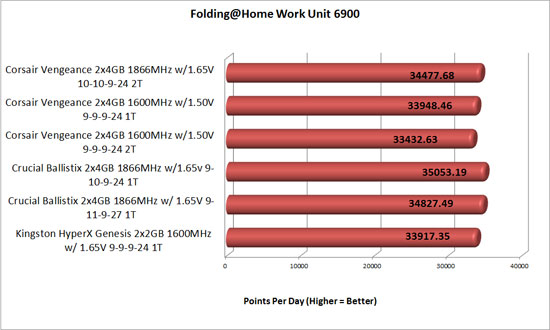
Our Folding @ Home test did show an appreciable improvement in performance at the 1T setting. Time per frame on our 6900 work unit decreased by 17 seconds, resulting in a 500 point per day increase compared to the 2T results.
At the 1866MHz speeds, performance increased even more, resulting in another 17 second reduction in TPF and another 500 point increase in points per day. So, in total, the 1866MHz setting resulted in 1,000 points per day than the stock 1600MHz 9-9-9-24 2T settings.

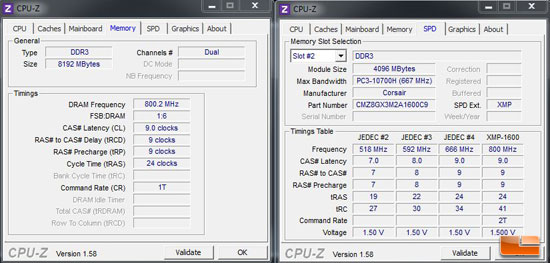
Comments are closed.